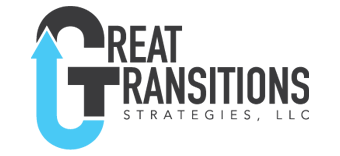What would you call the leadership style or theory you are experiencing in your current work environment?
When I ask that question, I get all kinds of answers. Mostly, are a description of their current work experience and interaction with their supervisor.
“We are a remote team with a leader responsible for our daily production.”
“I am an independent contributor to a design team. As long as I deliver my requirements on time, I have very little interaction.”
“I work in a totally hierarchical organization with my Program Manager responsible for production. He is continually on us to meet our metrics. Fortunately, we have incentives when we are ahead of schedule or exceed our production and quality standards.”
The trends of the times have an impact on many parts of our lives; fashion, politics, and even leadership
Think about your leadership journey and the leadership trends you experienced the last two years. My guess is it was different than previously experienced. Did you work remotely, hybrid, or in person but distanced. Some of us were ignored by colleagues and bosses while others suffered through micromanagement to include software monitoring.
Look at the leadership trends that influenced how you led and were led. Start from your current position and go back to your first.
Here is look at leadership practices that were in vogue over the past 40-50 years. Compare your experience to the times.
The 2000’s
Most recently leadership theories and practices center around complexity, inclusivity, and servant leadership.
Have you heard about the requirement for leaders to adapt our VUCA world (volatile, uncertain, complex, and ambiguous)? Leaders are mandated to be inclusive and transparent in how they lead. Include followers in the leadership process while serving those they lead. Servant leaders work for those they lead, providing the environment and resources for success.
Shared, Collaborative, and Collective Leadership are the practices from the early 2000’s. These attempted to reduce hierarchy by making organizations flatter and more collaborative. The person best suited for leading a particular task was designated the leader, rather than always having the same team lead.
Agile program management was popularized. It allowed teams to prototype, move quickly, and be flexible. Teams became able to adapt to stakeholders and market conditions.
The 1990’s
In the early 1990’s there was transactional leadership followed by transformational as coined by James McGregor Burns. Transactional leadership focused on leaders incentivizing work through transactions. Pay for performance, benefits, bonuses, over time. There was little focus on the individual.
Transformational leadership, was concerned more with the relationships between leaders and workers. Quality interactions between the leader and workers provided inspiration, positive results, and fulfillment. Both the leader and those being led benefited from the relationship and cared for each other.
Prior to the 1990’s
There were the contingent and situational leadership models. Leaders were taught to adapt the style to the context of their environment.
Behavioral leadership focused on actions and skills of the leaders, which was preceded by trait theory and the Great Man theory.
The Great Man theory; leaders are born not made. Trait theory: identify, and develop the traits and characteristics of effective leaders.
Leadership has evolved extensively from being about the leader to being about those being led. Though there was a time frame where a particular leadership theory or style dominated, all survived to some degree.
If you have worked with folks who were in the workforce prior to 1990, you have experienced leaders imbued with the Great Man Theory. They were born leaders, have all the answers and lead from the top.
Some fields of work have been difficult to change. Think a traditional versus modern style manufacturing facility. Traditional may feel very top down with one person in charge. Modern; collaborative, inclusive, flexible, and operates with input from the folks on the line.
Your Analysis
How has the leadership style you experienced over time affected you? What leadership style was popular in your first position and what is in place now?
Have you progressed or are you clinging to practices that worked earlier in your career?






